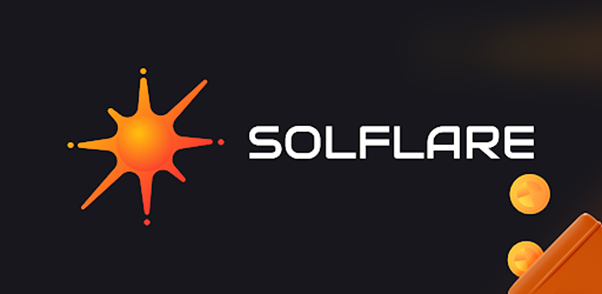Okay, so check this out—when I first dipped my toes into Solana’s ecosystem, I was overwhelmed by the sheer number of wallets claiming to be “the best.” Seriously? Some felt half-baked or too clunky. But then I stumbled upon the solflare wallet. Whoa! It wasn’t just another pretty interface; it offered Ledger support and advanced features that made me think, “Alright, this might actually work for me.”
Honestly, finding a crypto wallet that balances ease of use with robust security is tricky. Something felt off about most options, especially when it came to managing my Solana DeFi assets. Initially, I thought all wallets would be roughly the same under the hood. But nope—there’s a depth of difference that only becomes clear once you’re juggling multiple tokens, NFTs, and staking strategies. The solflare wallet quickly emerged as a standout because it seamlessly integrates Ledger hardware support, which, for me, is non-negotiable.
Here’s the thing. Many wallets either skimp on hardware integration or complicate the user experience with layers of unnecessary steps. I’m biased, but the solflare wallet strikes a rare balance. It’s not just about holding SOL tokens. It’s about interacting with the broader Solana DeFi world without feeling like you need a PhD in blockchain tech. That’s a big deal, especially for folks who value both security and convenience.
At first, I didn’t fully appreciate how critical Ledger support was until I tried managing larger sums. My instinct said, “Don’t just trust software alone.” On one hand, software wallets are handy, but on the other, hardware wallets like Ledger add a vital layer of cold storage security. The solflare wallet’s compatibility with Ledger means you get the best of both worlds—hot wallet flexibility and cold wallet safety. That’s a combo that’s worth its weight in gold, or well, SOL.
Really? Yeah, really. And it’s not just me saying this. The Solana community often touts solflare wallet for its intuitive interface and advanced features that cater to pros and newcomers alike. Plus, its open-source nature gives me some peace of mind, knowing it’s not a black box. You can literally peek under the hood.
Let me tell you about my first real test with solflare wallet. I wanted to dive into Solana DeFi protocols—staking, yield farming, liquidity pools—the whole shebang. Many wallets promise these features but falter when it comes to smooth execution. Solflare wallet handled it like a champ. The transaction speeds were snappy, and the UI didn’t freeze or glitch when switching between assets or staking pools. Honestly, that’s rare enough to mention.
And oh, the fee transparency! You won’t believe how many wallets hide or obscure network fees until it’s too late. Solflare wallet lays it out clearly. It’s such a relief not to get blindsided by unexpected costs. I’m not 100% sure if other wallets offering Ledger support are as transparent, but this part definitely bugs me when it’s missing.
Now, I’ll admit, the wallet isn’t perfect. Sometimes the mobile app lags behind the desktop version in feature updates, which is a bit frustrating for on-the-go managing. But the team is active, and updates roll out regularly. So it’s a minor hiccup, not a dealbreaker. Actually, wait—let me rephrase that: if mobile crypto management is your lifeline, you might want to double-check if the latest features you need are available there.
Check this out—

That screenshot captures the clean, user-friendly design that makes navigating staking opportunities pretty straightforward. I’ve seen clunkier dashboards that make you wanna throw your phone across the room. Solflare keeps it simple without sacrificing depth.
Why Ledger Support Matters More Than You Think
So, Ledger hardware wallets are kind of the gold standard for crypto security. They store your private keys offline, which is a huge defense against hacks. When I first got my Ledger Nano X, I was tempted to just use its native apps for every coin. But Solana’s ecosystem is so vibrant and fast-moving, native apps sometimes lag behind new DeFi innovations.
Here’s where solflare wallet shines—it bridges that gap perfectly. It lets you use your Ledger device to sign transactions while accessing the latest Solana dApps and DeFi features through its platform. This way, your keys never leave the secure hardware, but you still get the full power of Solana’s decentralized finance landscape.
Hmm… I remember a time when I tried a non-Ledger wallet for a sizable staking move, and something felt off about the transaction confirmation process. My gut said, “Better double-check.” Luckily, I canceled before confirming. That moment cemented my preference for hardware-backed wallets.
On one hand, software wallets are convenient for small day-to-day moves, but when you’re dealing with serious funds or complex DeFi strategies, the extra layer of security is very very important. I’m not saying you have to go full hardware always, but having that option integrated smoothly is a big win. Solflare wallet does that well.
Another cool thing about solflare wallet is its support for NFTs on Solana. NFTs are booming, and managing them alongside your tokens can get messy. The wallet’s interface helps keep everything organized without feeling overwhelming. I’m still getting the hang of this whole NFT craze (oh, and by the way, some collections are just wild), but solflare makes the experience less intimidating.
But hey, I get it—some folks prefer ultra-minimalist wallets. I’m not always into bells and whistles either. Yet for the average Solana user who wants a bit more control and security without diving into command-line tools, solflare wallet strikes a solid balance.
DeFi on Solana: Why Your Wallet Choice Really Matters
Solana’s speed and low fees are game-changers for DeFi, but only if your wallet can keep up. I’ve worked with a few wallets that slowed me down or had clunky DeFi integrations. That’s aggravating when you’re timing a yield farm move or swapping tokens across liquidity pools.
Solflare wallet integrates natively with many popular Solana DeFi apps, meaning you don’t have to jump through hoops just to stake or swap. I’m not 100% sure if it supports every single new dApp yet, but the roadmap looks promising. Plus, it supports custom tokens, so you’re not stuck with just the big names.
My experience tells me that wallets like solflare that embrace both hardware support and DeFi usability are rare. It’s like they understand that users want security without sacrificing the cutting-edge features Solana offers. This isn’t your average crypto wallet; it’s more like a command center.
And, yeah, I’m aware that some power users prefer direct CLI tools or scripts for DeFi, but that’s not most people. For the rest of us, having a wallet that reduces friction and risk while supporting advanced moves is very very important. It’s probably why the solflare wallet has gained so much traction in the US Solana community.
So here’s my takeaway: if you’re diving into Solana DeFi and want a wallet that respects your security needs (hello, Ledger!) but also lets you interact with the vibrant ecosystem effortlessly, give solflare wallet a serious look. It’s not perfect, but it’s one of the best out there for balancing all these factors.
And if you want to check it out yourself, here’s the official link to the solflare wallet. No hype, just a wallet that’s earned its stripes in a fast-moving landscape.
Anyway… I’m curious—what’s your experience with Solana wallets? Have you found one that really clicks? Drop me a line sometime.

 FB RECRUITING2 weeks ago
FB RECRUITING2 weeks ago
 BB RECRUITING4 days ago
BB RECRUITING4 days ago
 BB RECRUITING2 weeks ago
BB RECRUITING2 weeks ago
 FOOTBALL1 week ago
FOOTBALL1 week ago
 BASKETBALL5 days ago
BASKETBALL5 days ago
 MORE SPORTS2 weeks ago
MORE SPORTS2 weeks ago
 FOOTBALL2 weeks ago
FOOTBALL2 weeks ago
 FOOTBALL3 days ago
FOOTBALL3 days ago





